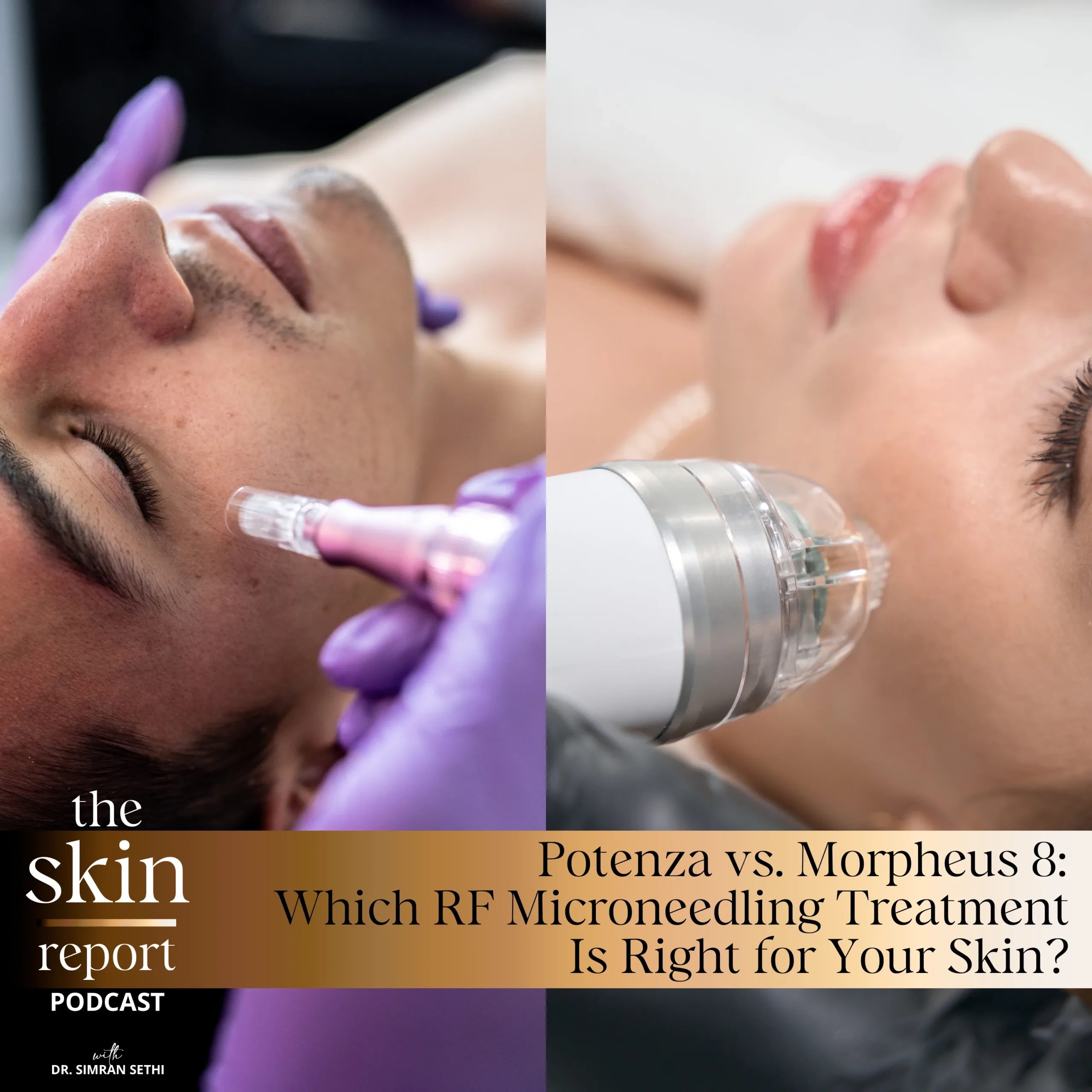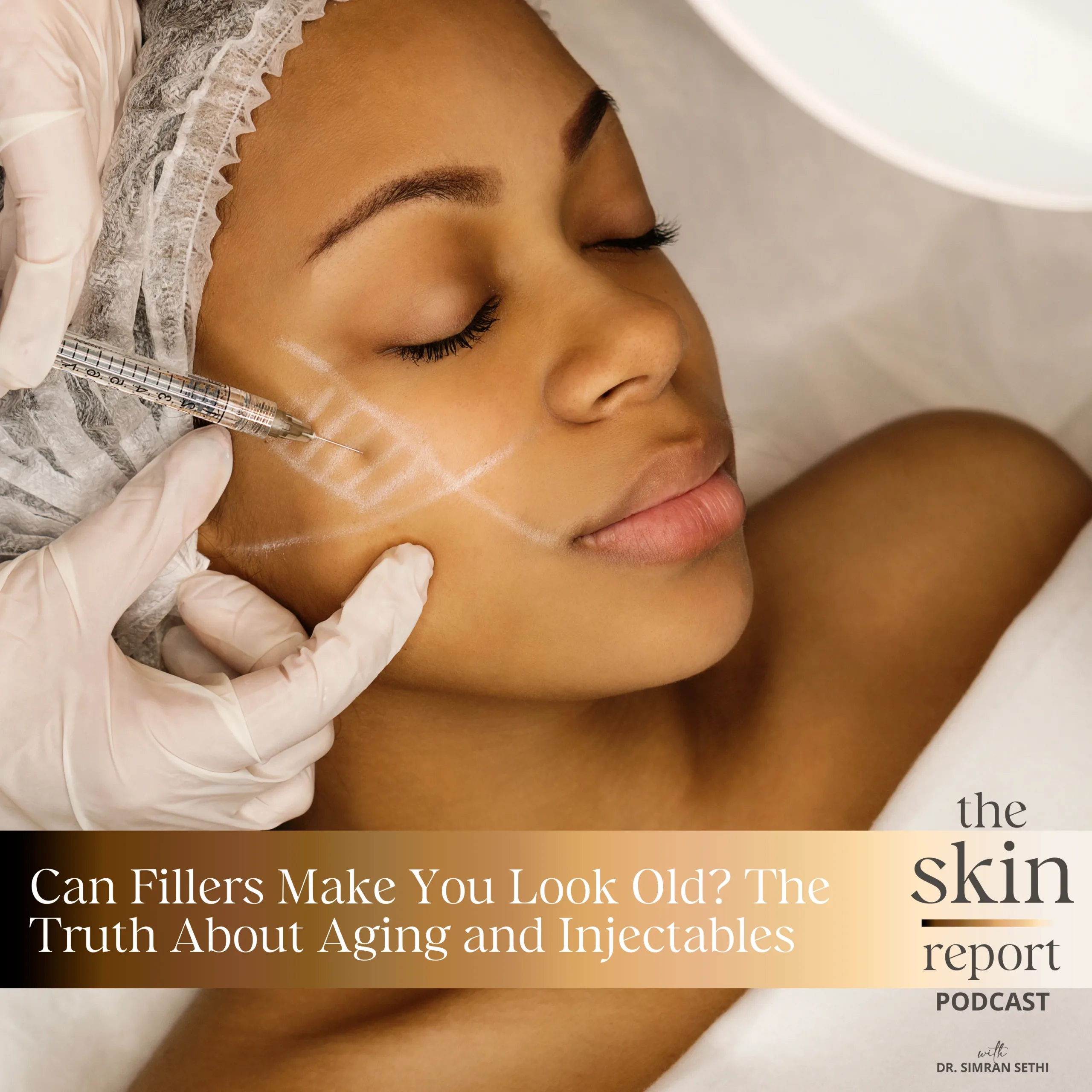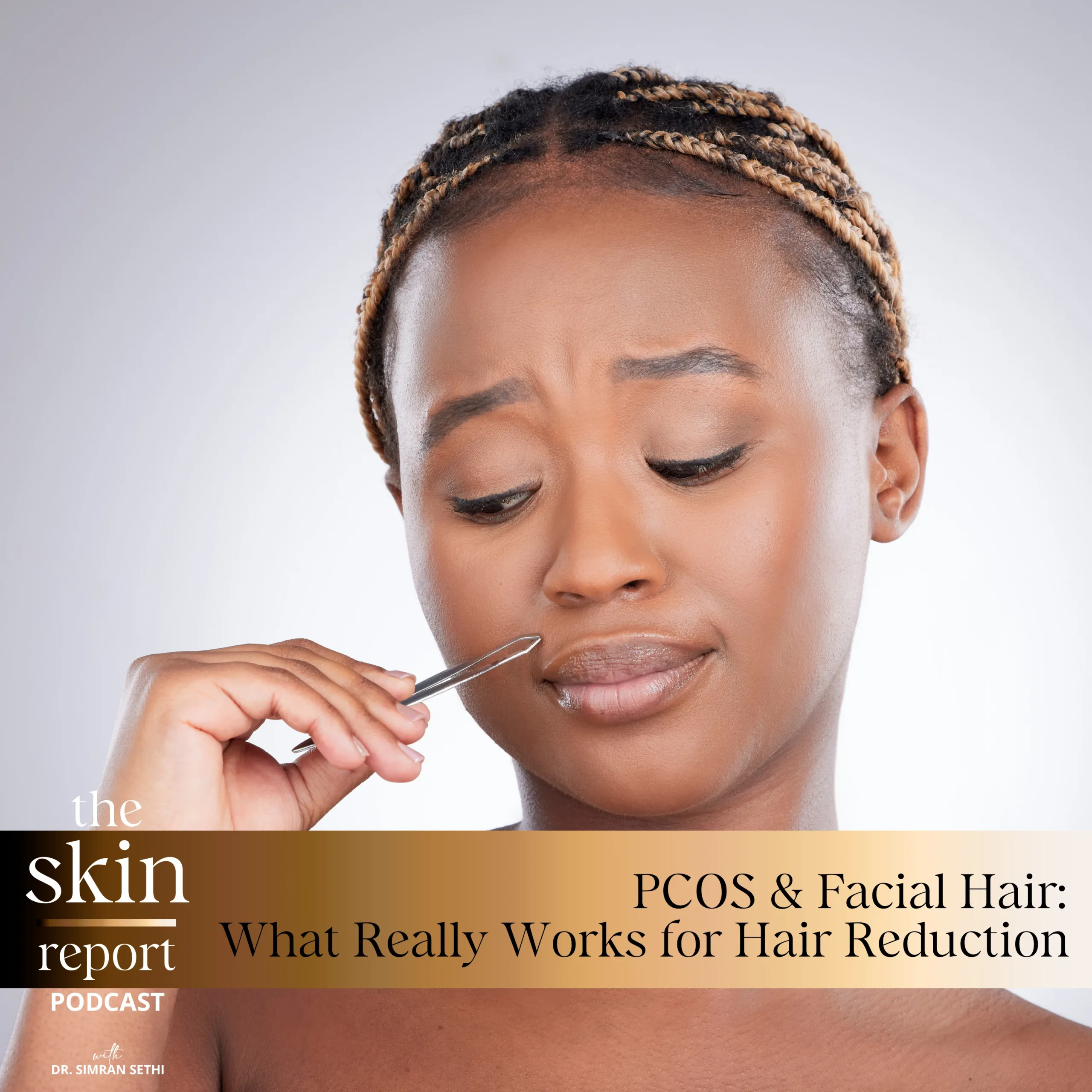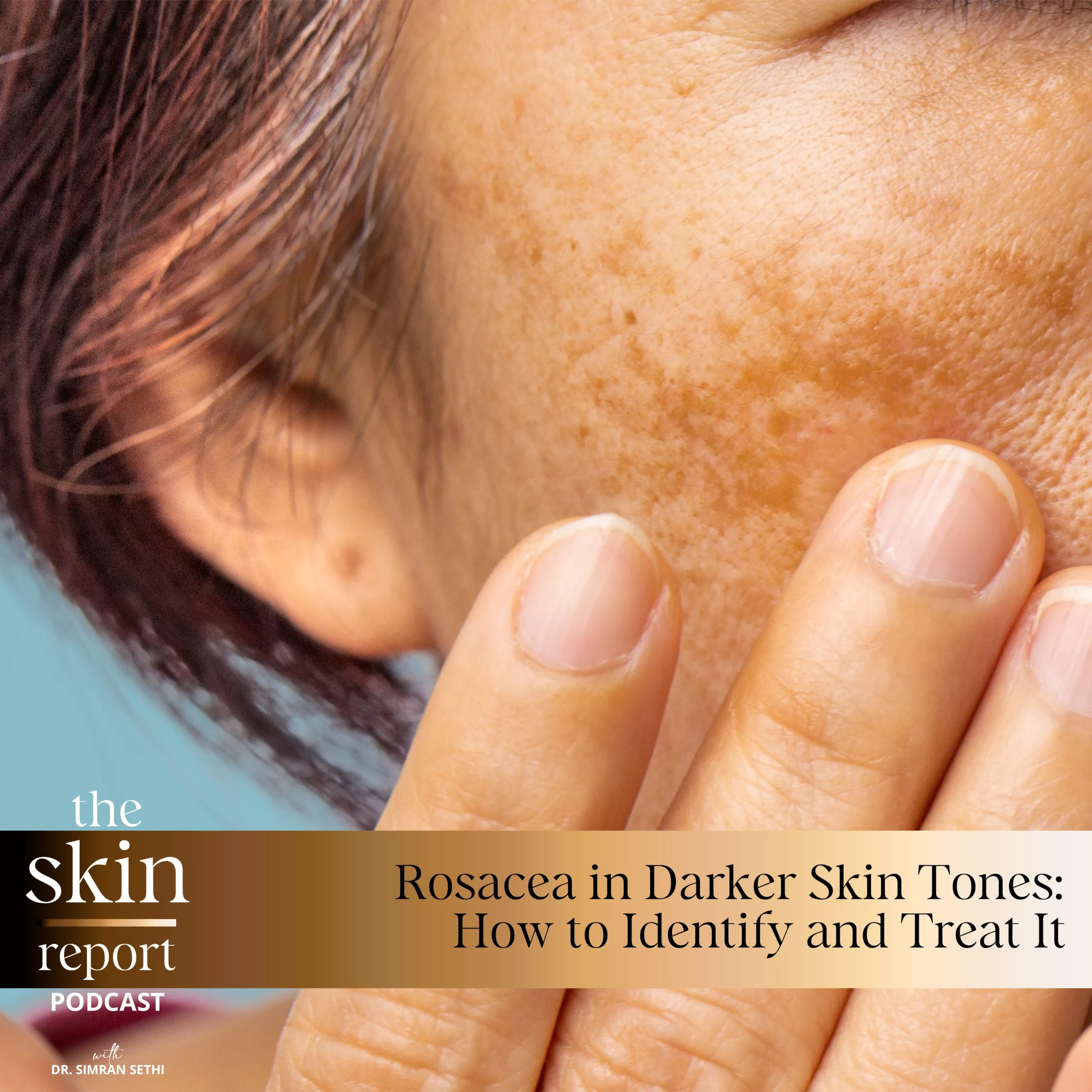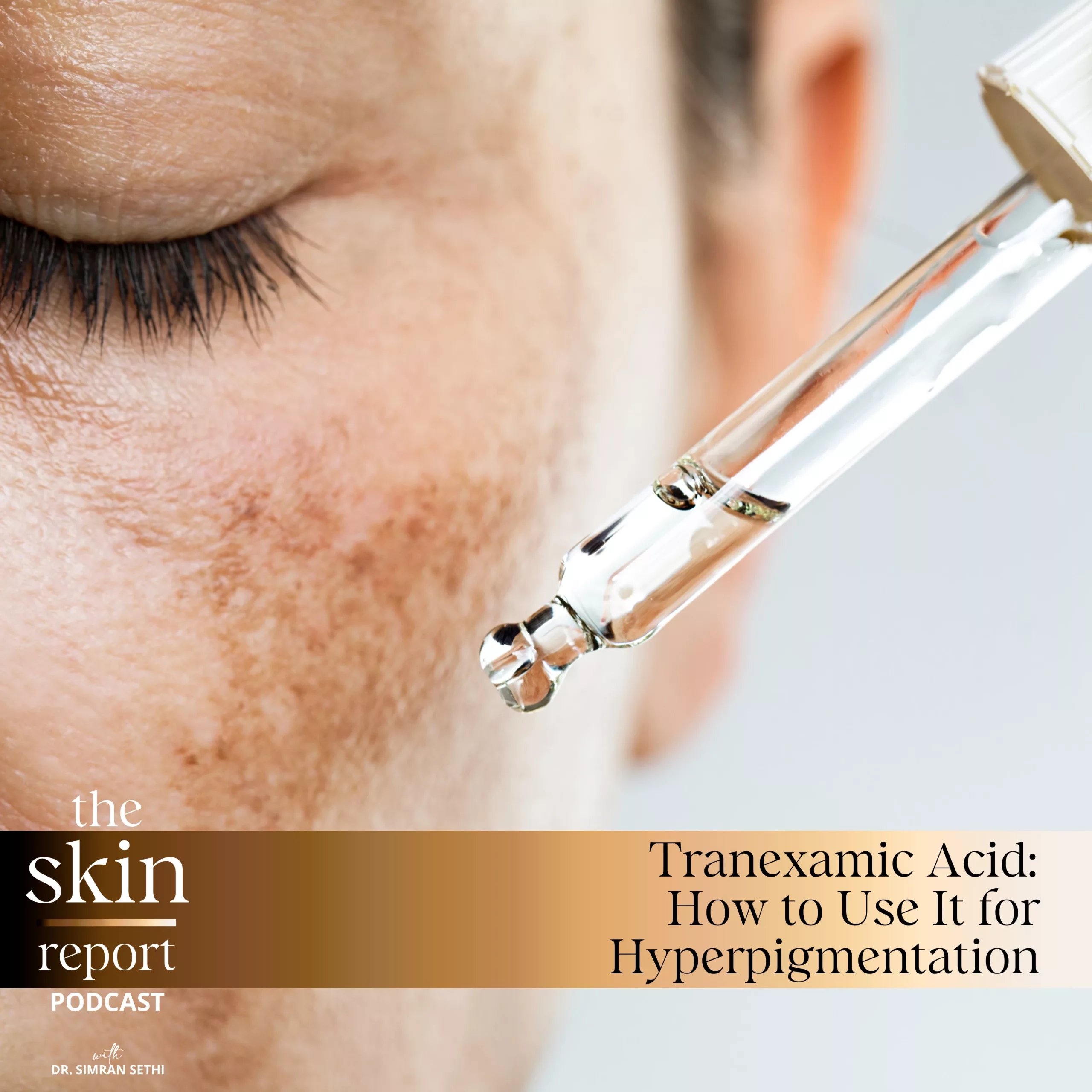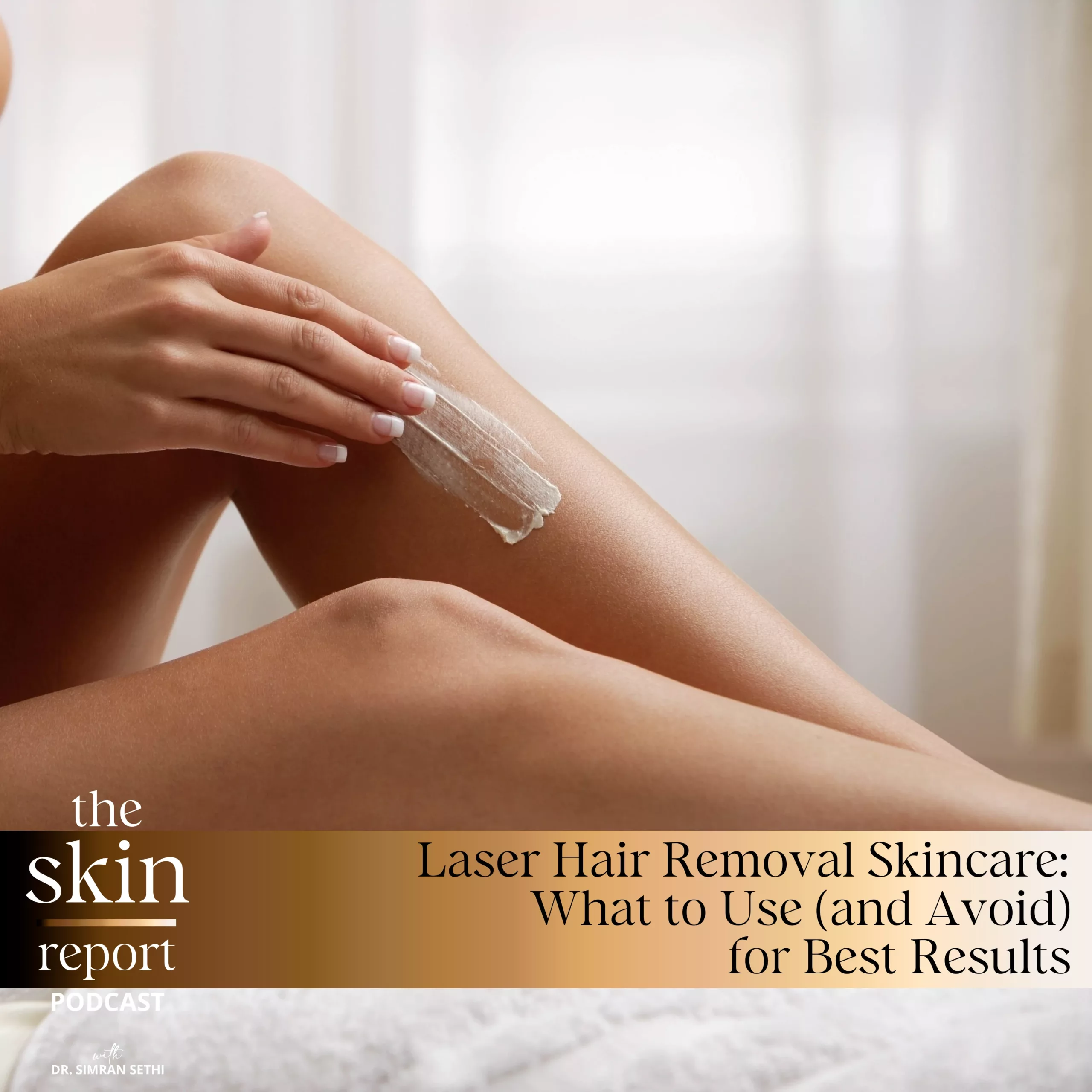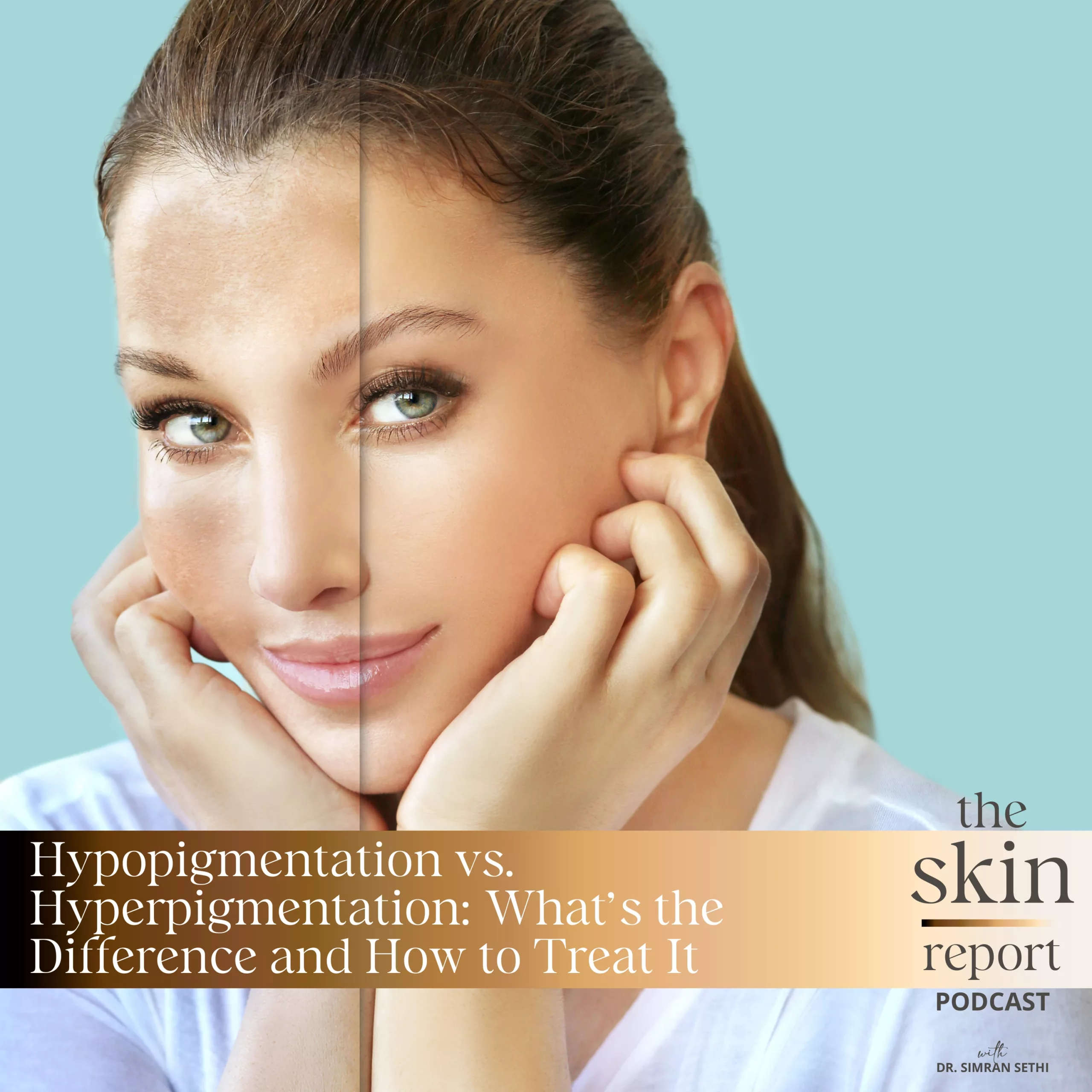Hello everyone. I’m Dr. Sethi with The SKIN Report. We are going to talk about ceramides. It’s a popular skincare ingredient. We’re going to do a deep dive to understand what are ceramides, what are they used for, and how do you optimize their use and results. Let’s get started.
Let’s start with what are ceramides. Ceramides are little lipids that are found in the epidermis, the outer layer of our skin. The epidermis is a protective layer of the skin that protects the underlying dermis, which has all of our collagen and elastin skin proteins. The job of our skin proteins or the dermis, is to give skin our integrity. And the epidermis’ job is to protect the skin, namely protect the dermis below it. Now, ceramides are a key part of that protection mechanism.
Ceramides are tiny little fats or lipids that are spread around our epidermis. Their job is to help hold onto water, which means they help with making that epidermis nice and fluid so that it can stretch and move as our skin should without tearing. And they also protect the moisture in the epidermis. Our skin needs moisture because that’s what keeps it hydrated, keeps it less fragile, and again, fluid.
When you have ceramides in your skincare, of course you are replenishing the ceramides in the epidermis. Typically, as we age, the number of lipids or ceramides in our skins naturally reduces. This is even more prominent in women as they’re going through perimenopause and menopause, where they experience sudden dryness in their skin, increase in the number of fine lines and wrinkles, maybe even increase in sensitivity of their skin. And a lot of this has to do with the amount of lipids or ceramides in their skin, the amount of hyaluronic acid in their skin because of the hormonal transitions they’re undergoing.
Ceramides are a very beneficial ingredient in moisturizers, and that’s why we find them in many moisturizers today. Even moisturizers like Cetaphil and CeraVe use ceramides so that they can safely moisturize the skin and help the skin hold on to its own water content better.
The only thing to remember is just like with any moisturizer, if you apply a moisturizer with ceramides, you also need to seal your moisture by applying a hyaluronic acid serum on top. This is not a big problem in younger children or younger people in general because they naturally have a higher content of lipids in their skin so that when they do moisturize their skin, they can usually hold on to that moisture effectively. But as you age and your skin has naturally reduced number of lipids, reduced ceramides, you do need to replenish it, not only with more lipids and ceramides, but also protection of the moisture that those molecules are holding. And you need to do that with a hyaluronic acid on top of your moisturizer.
So going back to women, especially in perimenopause or menopause, a big reason why many of them report not feeling hydrated, even if they’ve put on a very good moisturizer, is because they’ve lost a lot of that moisture from their skin. So your ceramides are going to work very, very well in your skincare routine if you protect them and protect the moisture they’re holding onto by applying a hyaluronic acid serum on top of your skin.
The other thing to pay attention to when using ceramides is just because you’re using a moisturizer with ceramides doesn’t mean you don’t need other skincare actives. When you are young, you’re a child or a teenager, you can get away with using Cetaphil, CeraVe. They have ceramides, they moisturize your skin, and that’s pretty much all you need. However, as you age, you start experiencing reduction in skin cell turnover, reduction in the amount of collagen you’re making. And just like you need to supplement your skin with better moisture control with adding ceramides, you also need to add skincare actives that address all the other things like reduced skin cell turnover, reduced collagen production.
So when you are picking a product that has ceramides in it, take a look at all the other skincare actives and supplement with antioxidants to help with that collagen production because you are not going to effectively moisturize your skin if you don’t have an underlying layer of collagen that’s nice and strong lifting up your skin and improving its integrity.
We’ve covered a lot about ceramides today, what are they, what are they used for, and how to optimize their effect. If you have any questions about ceramides or want to talk about your experience with them, please leave them in the comments below. If you haven’t already done so, please subscribe. Turn on your notification bell so that you always know when we release a new episode.


